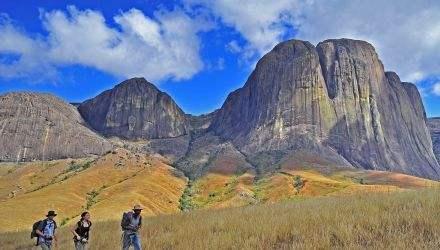The west part of Madagascar

They are on the coastline on the west part of the island, the longest coastline of Madagascar, of the Canal of Mozambique. This side is remarkable by the presence of many harbours the biggest is the Mahajanga port operating for international and domestic lines, the others small port are operating exclusively for domestic lines.
Though the rainy and dry seasons are common to the whole island of Madagascar, however this part has the most dry and sunny climate and also records many flash floods during November to March, the rainy season.
Its population is about 1,896,000 persons, composed by two slightly different ethnic groups, the Sakalava from the North and from the South, an apparent boundary don’t exist but they distinguish between themselves. Women also have their own way of plaiting their hairs and dressing their Lamba. Indigenous people's clothes, men and women, are a bit light and most of men are naked-chest.
The economy of this region is mainly based on seawater activities such as traditional and industrial fishing, and the shrimp cultivation. The harbour of Mahajanga is remarkable for the abundance of big and modern fishing-boats neighbouring small wooden pirogues equipped with veil and pendulums. Besides, the tourism industry begins to exploit the existing natural resources and touristic sites by expanding the infrastructures of reception of various types of visitors.
In addition to the beaches attractions, tourists are also attracted by various specific sites:
The Red Circus shows an unexpected beauty of nature constituted by the sedimentation of clays of different types of colours such as pastel, brown and carmine, during the quaternary era.
The Mangatsa Sacred Lake, located 18 km of the city of Mahajanga, famous for hiking and excursion. Tourists can enjoy the view of the large eels and carps swimming in the natural pool, the sacred lake. Hunting sports to wild boars and ducks can also be practiced a part from this site.
The alongside of the west coast line, nature lovers can enjoy a the best view of some endemic fauna such as ibises, the voarofy , or migratory birds such as pink flamingos, as well as endemic lemurs; and flora such as mangrove forest, raffia, satrana belonging to palm tree family, mahabibo or cashew tree typical for the region from which the alcoholic fermentation of the produce the local wine named Jawoa...